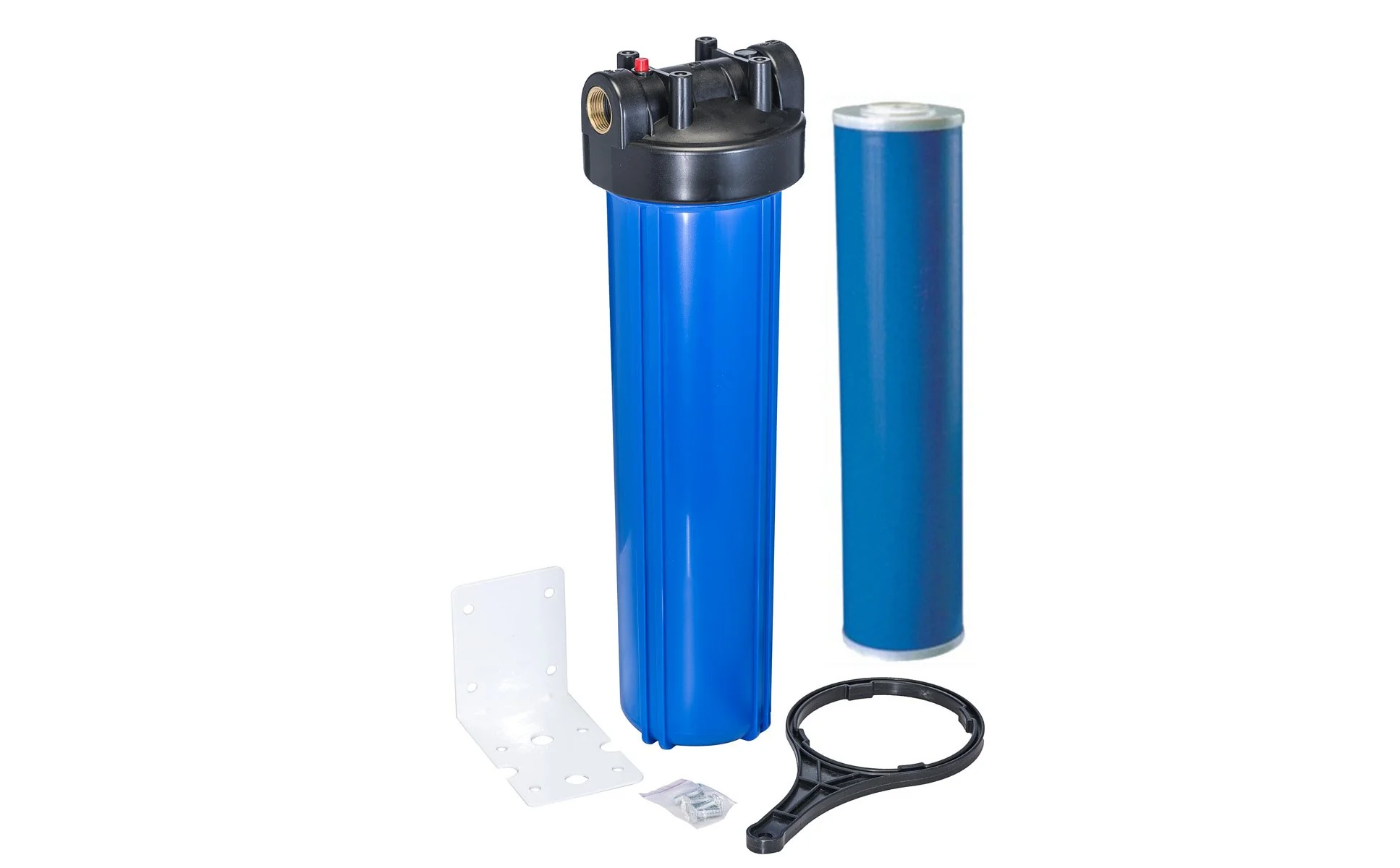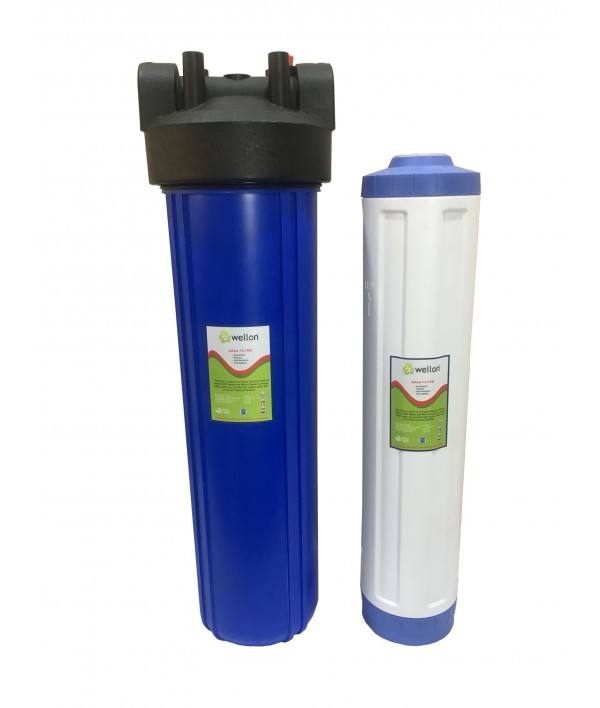What is a Whole Home Water Filter and How Does It Function?
What is a Whole Home Water Filter and How Does It Function?
Blog Article
Were you interested in details concerning What is a Whole House Water Filter and How Does It Work??

Whole home water filters are the excellent option for people that have an interest in having a home that offers tidy, drinkable water. In addition to giving quality drinking water throughout your home, an entire residence water filter also offers benefits such as eliminating contaminations that trigger identifying in water that is utilized to clean recipes. Unfiltered water can also cause problem such as rusting pipes as well as devices, ruining clothing that is washed and stain sinks or showers. Although whole home water filters are typically utilized in property houses, they can likewise be an efficient choice for houses or workplaces.
Initially, it might appear that entire residence water filters would certainly be exceptionally pricey when contrasted to various other filter choices, however they are really an extremely economical choice for water filtering. The cost variety of these water filters is big, starting at two hundred dollars and costing as long as one thousand dollars. The price of the filters is dependent upon their size, material and also lifetime. This might feel like an exceptionally high rate, however when compared with other filter options, it is actually really cost effective as a result of the quantity of filtering system that it offers.
Whole house water filters detoxify water in the very same style that other filters, such as countertop or under sink filters, do. The distinction is that it needs only one filter, which is attached to the major water resource, rather than needing numerous water filters to be affixed to different devices. As with the other filters, whole residence water filters cleanse tap water forcibly it via a number of different phases of filtering. One of the stages is carbon filtration. Carbon is a reliable technique of filtering water due to the fact that it is permeable as well as has the ability to get rid of little and huge pollutants. Carbon is important in getting rid of unstable organic carbon substances, which in some cases can create major damage to the liver, kidney or main nervous system. Carbon additionally eliminates dangerous materials such as pesticides, commercial solvents as well as insecticides.
An additional crucial step of the filtration procedure involves a procedure such as ionization or micron filtration. This action removes thousands of pollutants located in tap water, and also transforms the water to great tasting, healthy and balanced drinking water. As pointed out previously, the primary benefit of whole residence water filters are that they offer filtered water throughout your house with using just one filter.
Another benefit of whole house water filters is the lengthy life span that they use. Many of these filters last in between fifty and also one hundred thousand gallons of water. For numerous, the major drawback of whole residence filters is the higher than typical price. Although these filters are extremely inexpensive, they do require a big financial investment up front. Whole home water filters can additionally require a considerable quantity work to set up.
How to Remove Iron Bacteria from Well Water
If your drinking water comes from a private well, you will likely experience issues with iron in your water. These issues can range from poor-tasting coffee to bright orange streaks in toilets and bathtubs. However, there’s an equally familiar but less understood problem linked to iron contamination: iron bacteria, also known as “iron-eating” or “iron-oxidizing” bacteria.
Iron is one of the most abundant minerals in the earth’s crust. As a result, elevated levels of iron are usually widespread in the groundwater that serves wells, often fostering the growth of iron bacteria in well water. These organisms can combine oxygen with iron, manganese, or other nutrients in the water to form a swampy sludge containing rust deposits, bacterial cells, and other organic and inorganic matter. This slimy residue then sticks the bacteria to pipes, pumps, plumbing fixtures, and appliances, causing clogging, foul tastes and odors, corroded pipes and plumbing fixtures, etc.
Well-water systems used infrequently or intermittently are typically more prone to iron bacteria problems. To make matters worse, removing these organisms from your water can be complicated, which is why we recommend taking steps to prevent them from forming in your well in the first place. Luckily, this article explains a highly effective way to remove iron bacteria from well water. Let’s start by discussing what iron bacteria are and how they get into well water.
Signs of Iron Bacteria in Water
If your household water supply is contaminated with iron bacteria, you might notice several unappealing signs that may indicate iron bacteria presence. These signs may include:
Stains and deposits on plumbing fixtures, pipes, and appliances
One of the most common indicators of iron bacteria in well water is stains and deposits on plumbing fixtures, pipes, and appliances. Water containing these organisms will leave rust-colored slime stains and deposits in sinks and toilets and inside well casings. You’ll also notice stains on fixtures, tableware, laundry, and various surfaces, that keep coming back no matter your cleaning method or efforts. These stains can be grey, yellow, or brown but are often a reddish-orange rust-like color.
Discoloration
Water containing iron bacteria can have a yellow, red, or orange hue. Further, visible deposits that have a clumpy or slimy consistency are very likely to have been caused by the presence of iron bacteria. Iron bacteria deposits are widespread in toilet tanks. In many cases, the deposits will take the form of a slimy coating along the walls of the tank. If the bacteria have been in the water for a lengthy period, the deposits could float in the water.
Oily sheen on the water surface
A quick and easy way to check for the presence of iron and other slimy-producing bacteria is to look in the water closet tank of your toilet. If you see an oily sheen on the surface of the water and can feel a slimy residue on the inside of the tank, slime-producing bacteria are likely present in your water system. If you use disinfectant in your tank, evidence of these conditions might not be so apparent.
https://www.springwellwater.com/how-to-remove-iron-bacteria-from-well-water/

As an enthusiastic reader about Everything You Need to Know About Whole House Water Filter, I imagined sharing that excerpt was smart. Loved our posting? Please share it. Help others check it out. Thanks a lot for taking the time to read it.
Book Appointment Now
Report this page